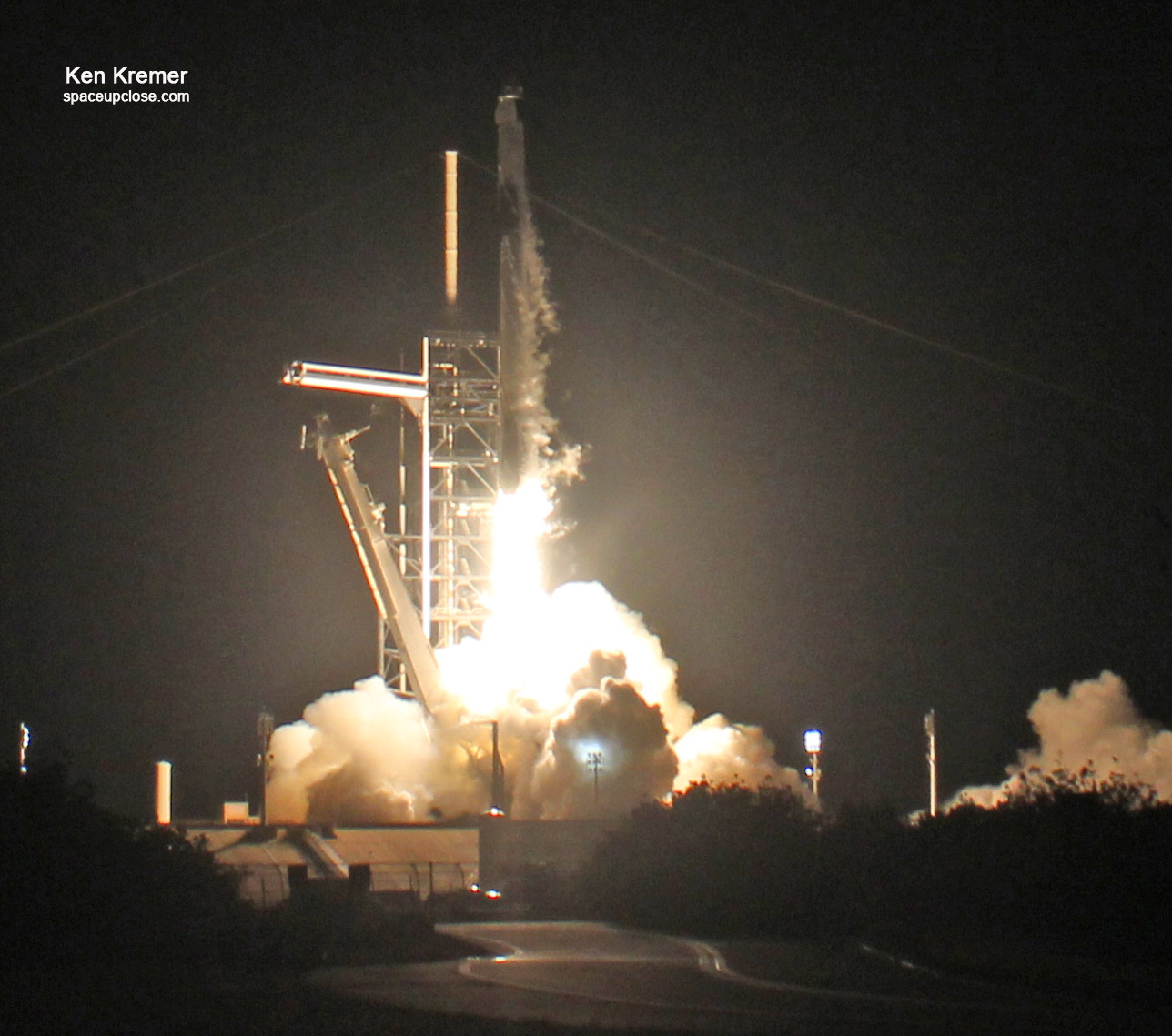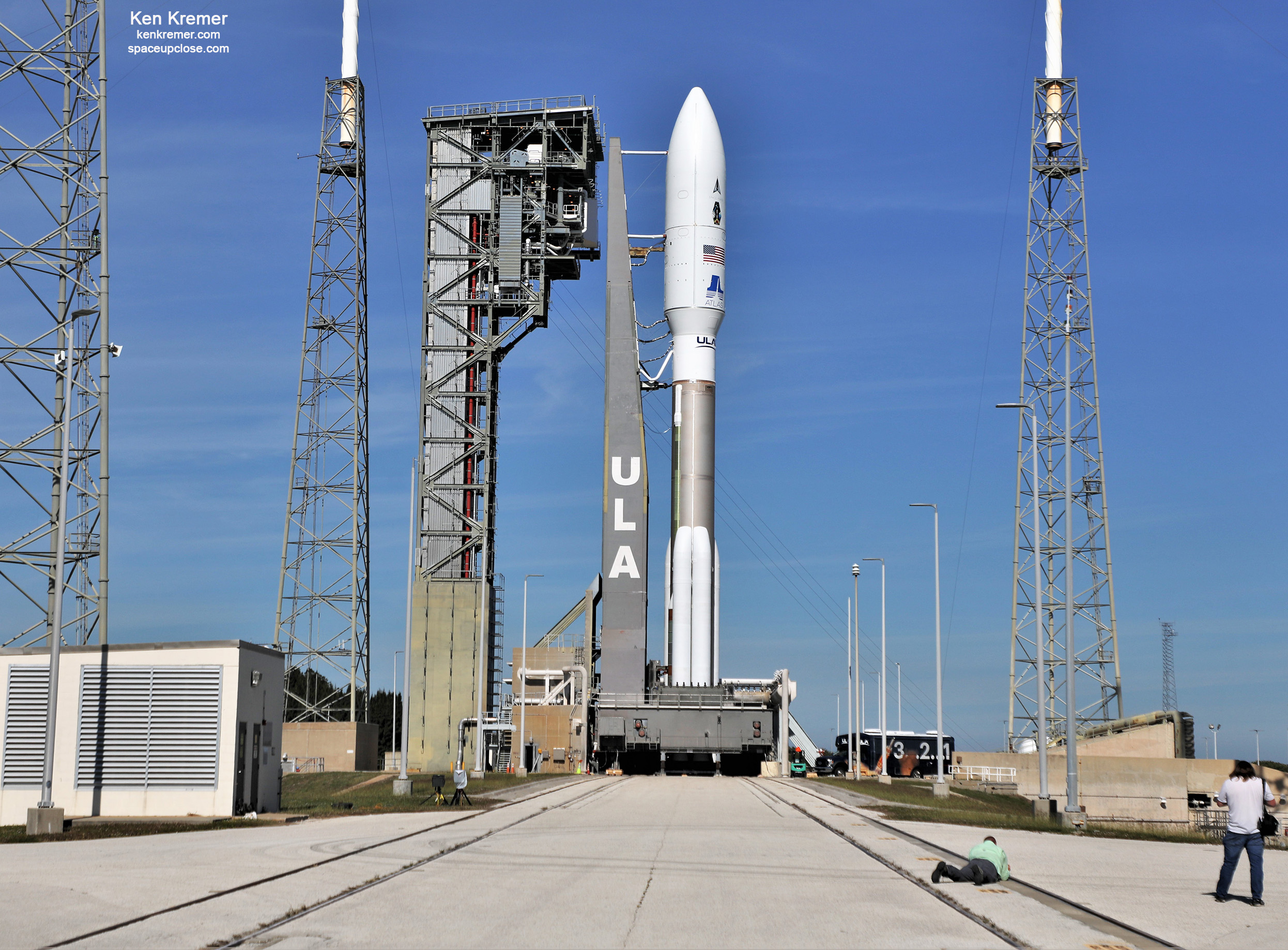
CAPE CANAVERAL SPACE FORCE STATION, FL – BREAKING NEWS: Just as I was writing this preview story for the United Launch Alliance (ULA) Atlas V rocket launch of the $1 Billion STP-3 space technology demonstration mission aiding both U.S national security and NASA high speed communications research scheduled for overnight Sunday morning, Dec. 5, the company just announced at least a 24 hour delay when a leak of RP-1 propellant was discovered in the ground support equipment at pad 41 on Cape Canaveral Space Force Station.
RP-1 is a highly-refined rocket-grade kerosene fuel and one of two first stage propellants for the Atlas V rocket.
Liftoff of ULA Atlas V launch carrying the Space Test Program-3 (STP-3) mission for the U.S. Space Force was planned on Sun., Dec. 5 at 4:04 a.m. EST (0904 GMT) from Space Launch Complex-41 at Cape Canaveral Space Force Station in Florida.
ULA announced the scrub via tweet at 7:07 p.m. ET this evening
The launch of a ULA #AtlasV 551 rocket carrying the #STP3 mission for the @SpaceForceDOD @USSF_SSC has been scrubbed. During initial operations, a leak was discovered in the Rocket-Propellant-1 (RP-1) ground storage system. Launch is now scheduled for Mon., Dec. 6 at 4:04am EST.
— ULA (@ulalaunch) December 5, 2021
ULA is tentatively retargeting liftoff for the same time on Monday. But further delays are possible as ULA crews continues assessment and cleanup work.
Launch is now scheduled for Mon., Dec. 6 at 4:04 a.m. EST (0904 GMT) from Space Launch Complex-41 at Cape Canaveral Space Force Station in Florida.
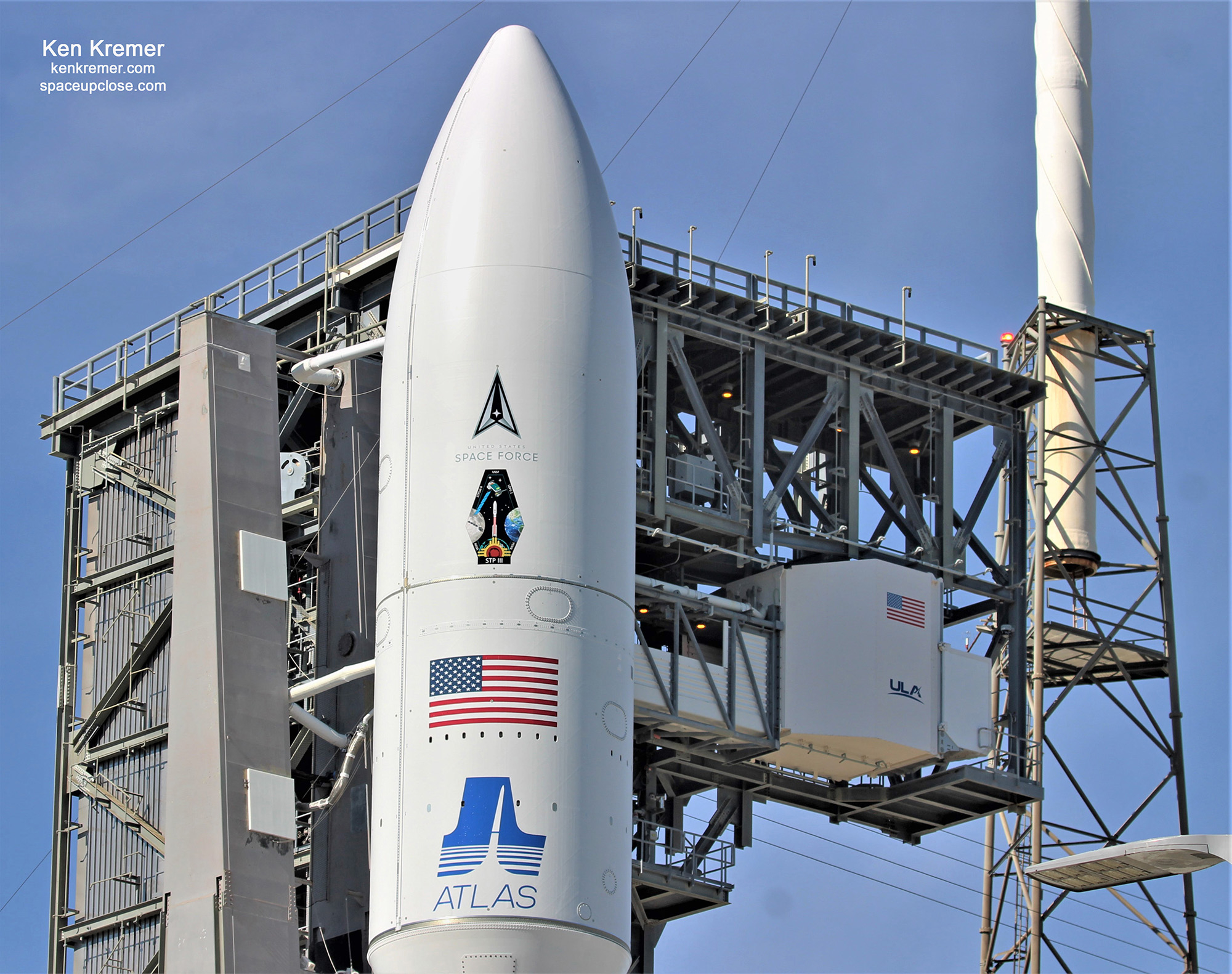
The payload for the launch of the ULA Atlas V was the Space Test Program-3 (STP-3) mission for the U.S. Space Force’s Space Systems Command (SSC) including payloads for the Space Force as well as NASA – that will be launched directly to geosynchronous orbit (GSO) over a seven-hour period. Further details below.
The mission will be the longest to date lasting over seven hours from launch to payload separation during the rockets ascent – which required development of a new longer lasting battery – the In-Flight Power System (IFPS) – to keep the batteries on the payloads fully charged.
The weather outlook for Sunday’s planned launch was extremely favorable showing 90 percent chance of favorable weather conditions for launch.
The launch window extends for two hours until 6:04 a.m. EST (1104 GMT).
The weather outlook for Monday’s launch attempt drops slightly to an 80 percent chance of favorable weather conditions for launch.
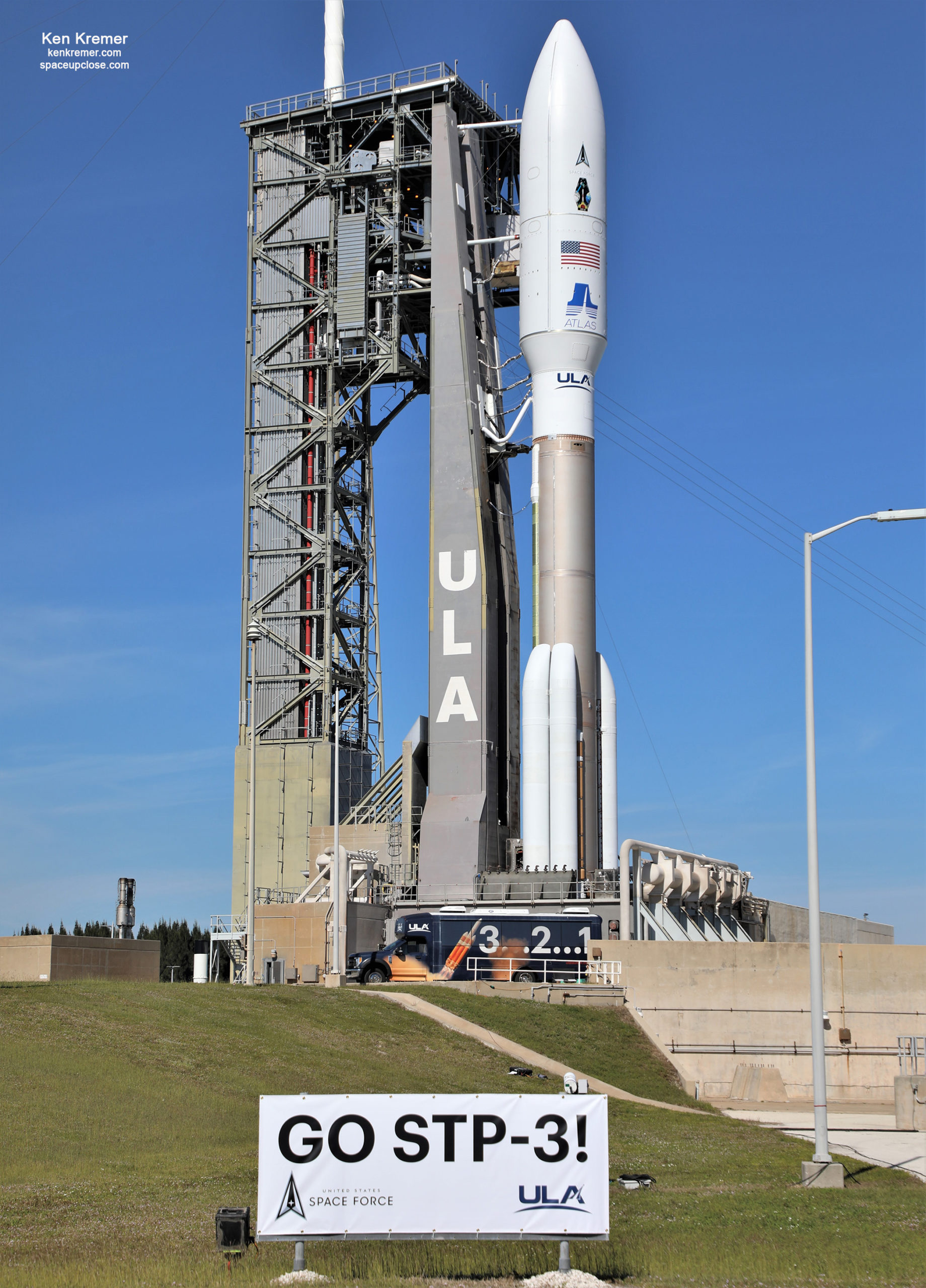
We media completed our remote cameras setups today, Saturday afternoon, Dec. 4.
Enjoy our ULA Atlas V STP-3 mission pre-launch pad and rollout photos from the Space UpClose team of Ken Kremer and Jean Wright.
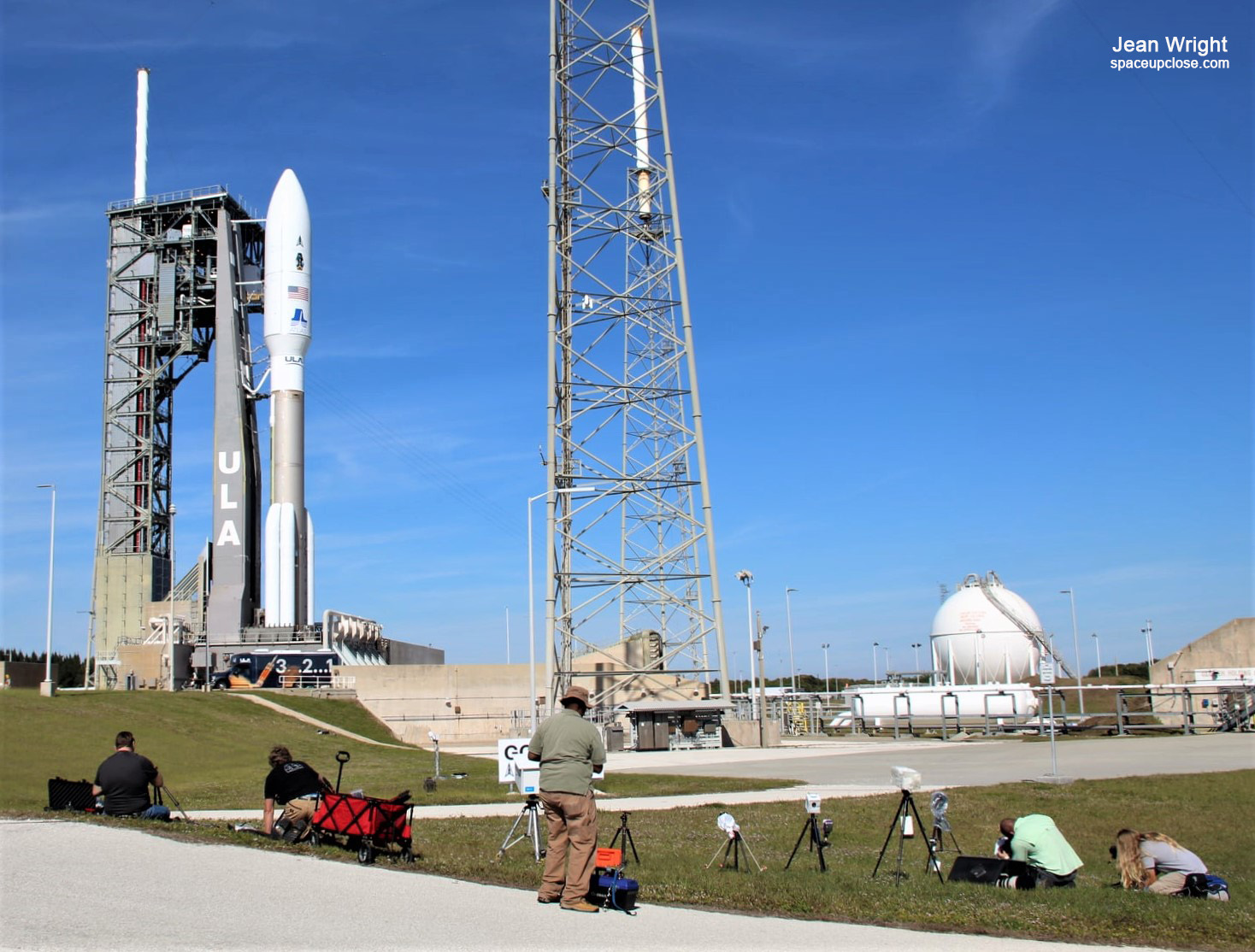
You can watch the Atlas V STP-3 launch broadcast live on ULA and NASA webcasts:
ULA updates from the launch control center will now begin with live countdown updates on ULA’s webpage Sunday, Dec. 5 at 8:30 p.m. EST (0130 GMT Monday , Dec. 6) just prior to starting the countdown.
Watch live: www.ulalaunch.com
https://www.ulalaunch.com/missions/next-launch/atlas-v-stp-3
Join us starting tonight for live reports throughout the countdown to the #AtlasV #STP3 launch. Coverage begins at 8:30pmEST (0130 UTC). We’ll be playing trivia for a chance to win ULA swag! Liftoff time is scheduled for Sun. 4:04amEST (0904UTC). https://t.co/LEV7vitjDL pic.twitter.com/DLf9SpTNc0
— ULA (@ulalaunch) December 4, 2021
The live video webcast of the launch begins at 3:30 a.m. EST (0830 UTC) and will be viewable on the ULA webpage live on www.ulalaunch.com and on NASA TV.
The ULA Atlas V is launching in its most powerful configuration – the 551 version with the maximum liftoff thrust amounting to approx. 2.6 million pounds of sea-level liftoff thrust
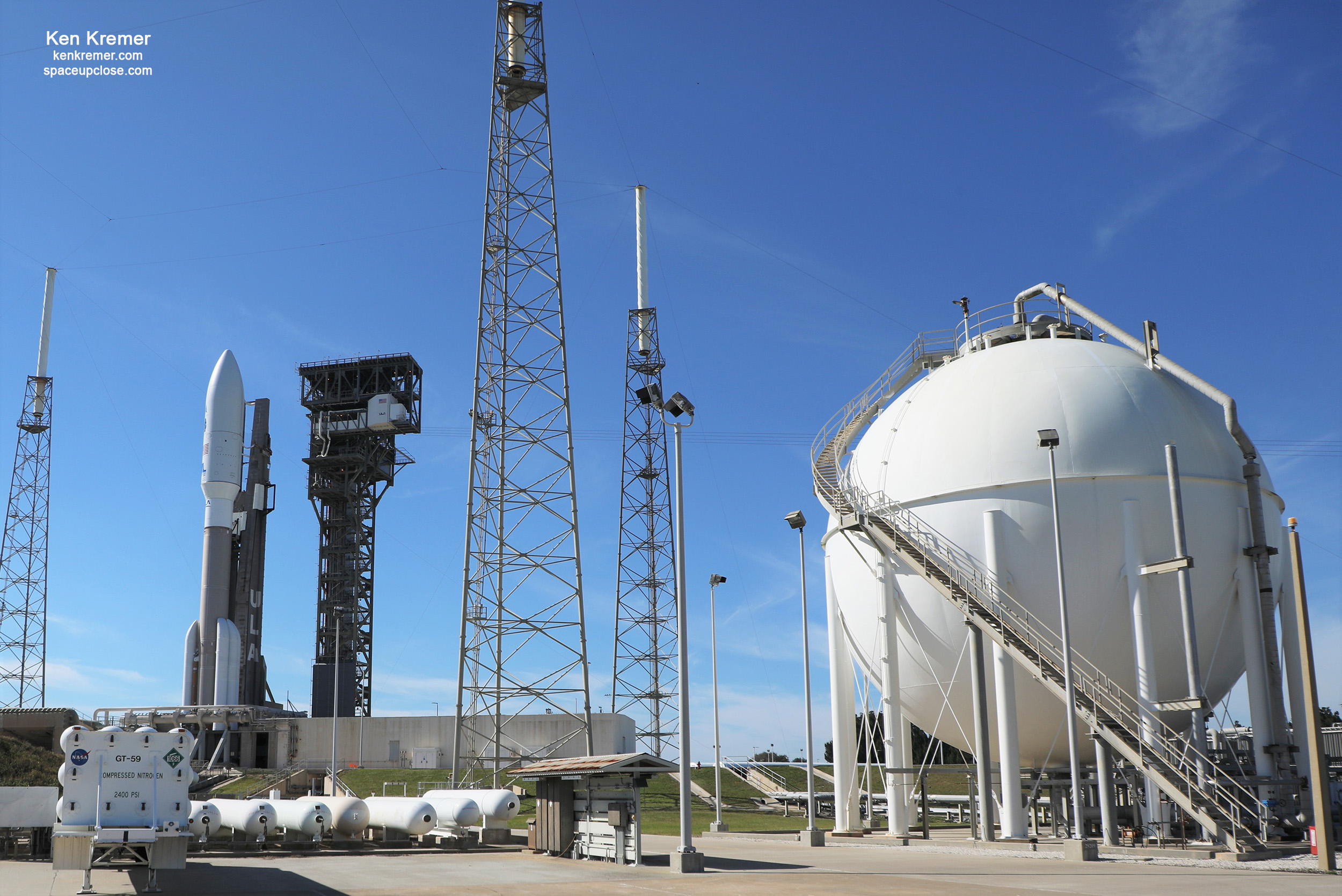
The two stage Atlas V 551 configuration rocket includes a 5.4 meter payload fairing and stands 196 ft. (59.7 m) tall.
The Atlas first stage booster is powered by the Russian made RD AMROSS RD-180 single engine with dual thrust chambers and nozzles providing 860,200 lb sea level liftoff thrust. It is fueled by RP-1 and liquid oxygen (LOX).
The booster is augmented with five strap on Graphite Epoxy Motors (GEM) 63 solid rocket boosters (SRBs) provided by Northrop Grumman and provide 371,550 lb thrust each.
Aerojet Rocketdyne provided the RL10C-1 engine for the Centaur upper stage with generates 22,900 lb thrust. Fueld by LOX and LH2 (liquid hydrogen).
The STP-3 mission is a co-manifested mission with two spacecraft that “matures technology and reduces future space program risk for the Department of the Air Force and the U.S. Space Force by advancing warfighting capabilities in the areas of nuclear detonation detection, space domain awareness (SDA), weather, and communication,” says ULA. See rocket graphic below.
The primary spacecraft is STP Satellite (STPSat-6) and the rideshare spacecraft is the Long Duration Propulsive Evolved Expendable Launch Vehicle (EELV) Secondary Payload Adapter (ESPA) LDPE-1.
Both spacecraft will be delivered to geosynchronous orbit (GSO) – via a direct injection rather than delivered to LEO for orbit raising
Watch this description by ULA CEO Tory Bruno of the STP-3 mission and the direct injection into GSO:
#ToryTalk // ULA’s President and CEO @ToryBruno gives an overview of the #AtlasV #STP3 mission that will lift satellites to the high ground of geosynchronous orbit. Go Atlas! Go Centaur! Go STP-3!
Watch on YouTube: https://t.co/E4ZVvd8G9E pic.twitter.com/yVHMZoyOuG
— ULA (@ulalaunch) December 4, 2021
Video Caption: ULA President and CEO Tory Bruno gives a mission overview of the Atlas V 551 rocket that will launch the Space Test Program (STP)-3 mission for the U.S. Space Force. Credit: ULA
“STP-3 is a unique mission as the Atlas V will deliver STP-3 directly into Geosynchronous Equatorial Orbit (GEO). This is a highly complex orbital insertion that requires three Centaur burns and precise navigation, a capability unique to the Atlas V. This is our longest mission to date at seven hours and 10 minutes until final spacecraft separation,” said Gary Wentz, ULA vice president of Government and Commercial Programs.
“We are proud to work alongside our mission partners to prepare to launch this challenging mission and thank them for their outstanding teamwork.”
The STPSat-6 satellite comprises several payloads including: the Space and Atmospheric Burst Reporting System 3 (SABRS-3), an operational mission from the National Nuclear Security Administration, NASA’s Laser Communication Relay Demonstration (LCRD) payload to test technologies for the next generation of data relay satellites, and several Department of Defense Space Experiments Review Board space weather and situational awareness payloads.
The SABRS-3 payload is an operational mission involving nuclear detonation detection from the National Nuclear Security Administration that will enhance US capabilities when adversaries set off a nuclear test blast.
NASA’s Laser Communications Relay Demonstration (LCRD) will showcase the unique capabilities of optical communications.
Most NASA missions use radio frequency communications to send data to and from spacecraft since the beginning of the space age.
“However, as space missions generate and collect more data, the need for enhanced communications capabilities becomes paramount, says NASA.
“Optical communications will provide significant benefits for missions, including bandwidth increases of 10 to 100 times more than radio frequency systems.”
LCRD optical communications tests will also be done with the International Space Station (ISS) in late 2022 or early 2023 after communication hardware is shipped up to the ISS sometime in 2022, NASA official told Space UpClose.
At @NASAGoddard, we’re getting ready to support the launch of @NASA’s next big @NASAlasercom mission, the Laser Communications Relay Demonstration. The mission will fly on a @SpaceForceDoD spacecraft and a @ulalaunch #AtlasV launch vehicle. pic.twitter.com/yWIL5fE4kX
— NASA's Near Space Network (@NearSpaceNet) December 4, 2021
STP missions have been flying for over 50 years for the US Department of Defense (DOD):
DYK? STP stands for “Space Test Program.” The U.S. Department of Defense has been launching these scientific experimental payloads since 1965. STP-3 will carry nine payloads into space. Tune in on Dec. 5 to watch! #DiscoverSSC #SpaceStartsHere #STP3 #STPSat6 #LDPE📸@ulalaunch pic.twitter.com/fs5Bm3mHlg
— Space Systems Command (@USSF_SSC) December 3, 2021
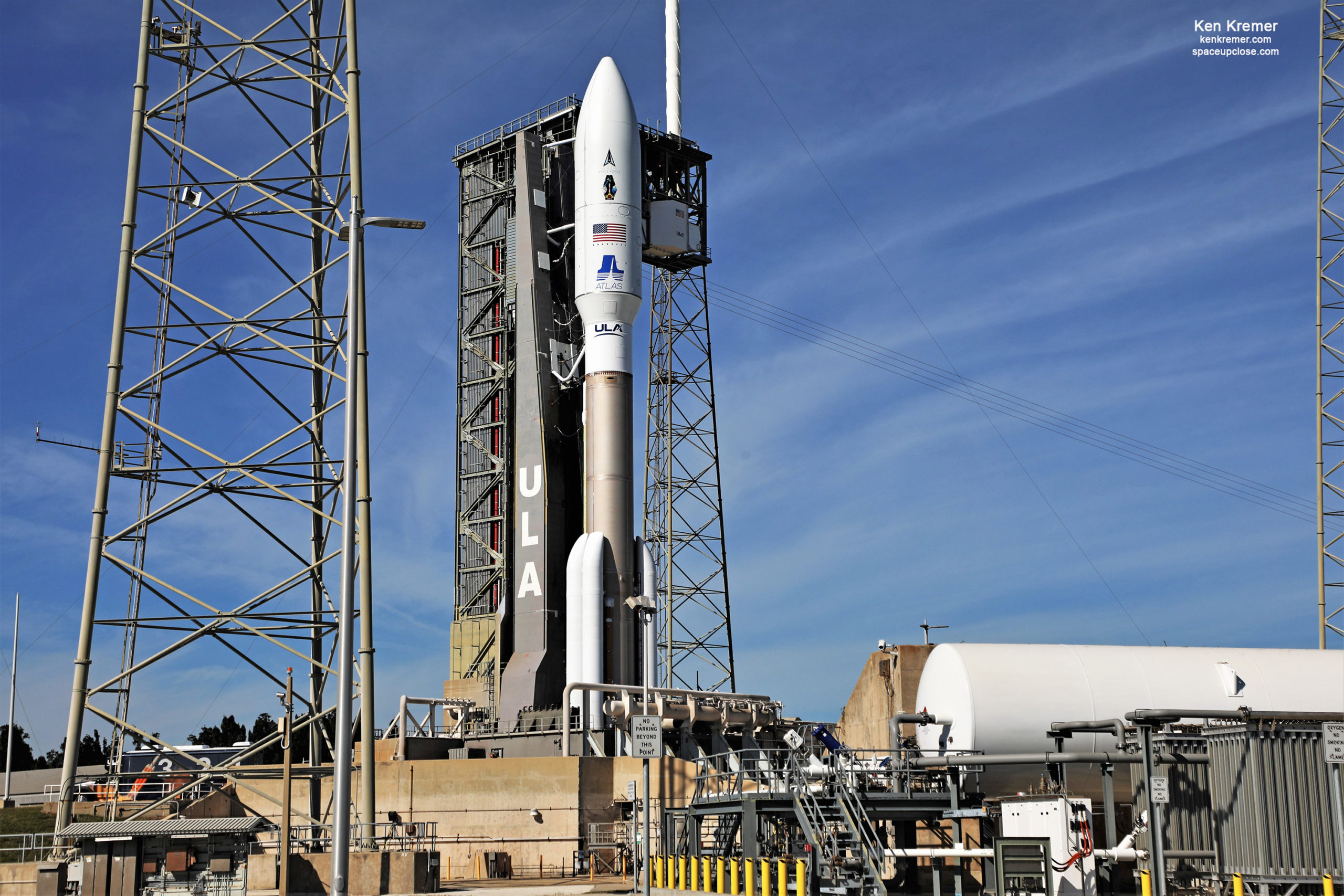
The weather forecast from the Space Force was excellent:
Launch Forecast Summary:
Dec 5: Overall probability of violating weather constraints: 10%
Primary concerns: Cumulus Cloud Rule
Dec. 6: Overall probability of violating weather constraints for 24-hour delay: 20%
Primary concern: Cumulus Cloud Rule
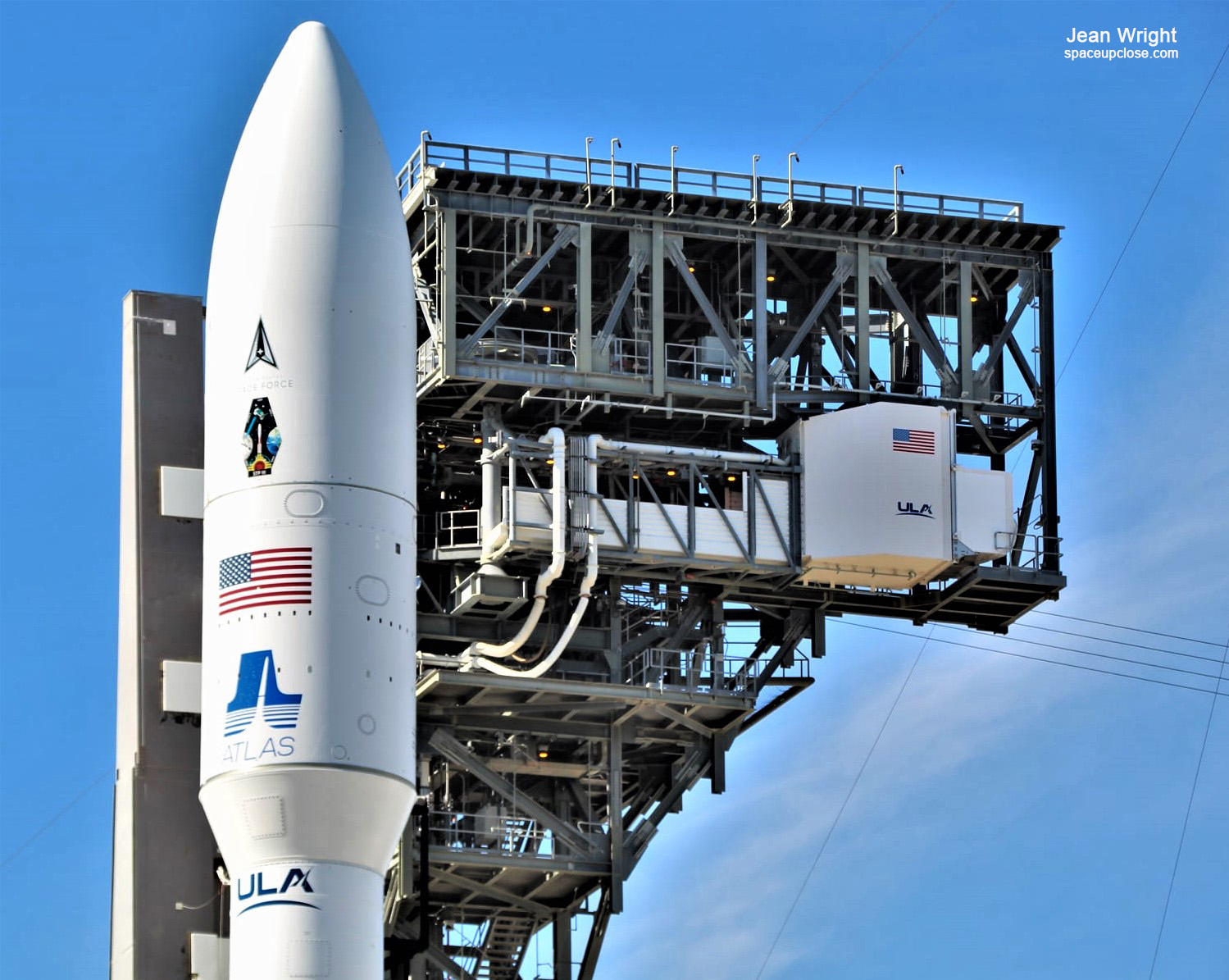
Here is a launch visibility map from ULA showing when and where spectators in the Southeast US can see the launch.
Wondering when and where you may see the #AtlasV #STP3 launch? The visibility map shows when and where your best chances are to see the rocket in the Southeastern U.S.! Launch is scheduled for Sun. at 4:04amEST (0904UTC) from Cape Canaveral, FL. https://t.co/LEV7vitjDL pic.twitter.com/1p0ogOl3qu
— ULA (@ulalaunch) December 4, 2021
The Atlas V was rolled out to pad 41 on Dec. 3 atop the MLP. Fully fueled the rocket was a mass of nearly 1.3 million pounds (590,000 kg).
This #AtlasV rocket, designated AV-093, stands 196 feet (59.7 meters) tall and will weigh 1,295,695 pounds (587,717 kg) once fully fueled for liftoff. It features five side-mounted solid rocket boosters for max liftoff thrust. pic.twitter.com/muiZJSEEem
— ULA (@ulalaunch) December 3, 2021
Here’s my views of the rollout as seen a dozen miles away in Titusville across from the Indian River Lagoon.
Sailboats & Flock of V Birds greet arriv 196ft #ULA #AtlasV pad41 moments ago-for #STP3 launch to GEO Dec5 for @SpaceForceDoD & #NASA target overnight 404AM! After move 1800ft & 1.9mill lb on MLP from VIF to pad.AV launch in most powerful 551 config.90th flight overall.Wx 90% GO! pic.twitter.com/qEIwiSRfqX
— Ken Kremer🇺🇦🇩🇪🇺🇸🚀🧪 (@ken_kremer) December 3, 2021
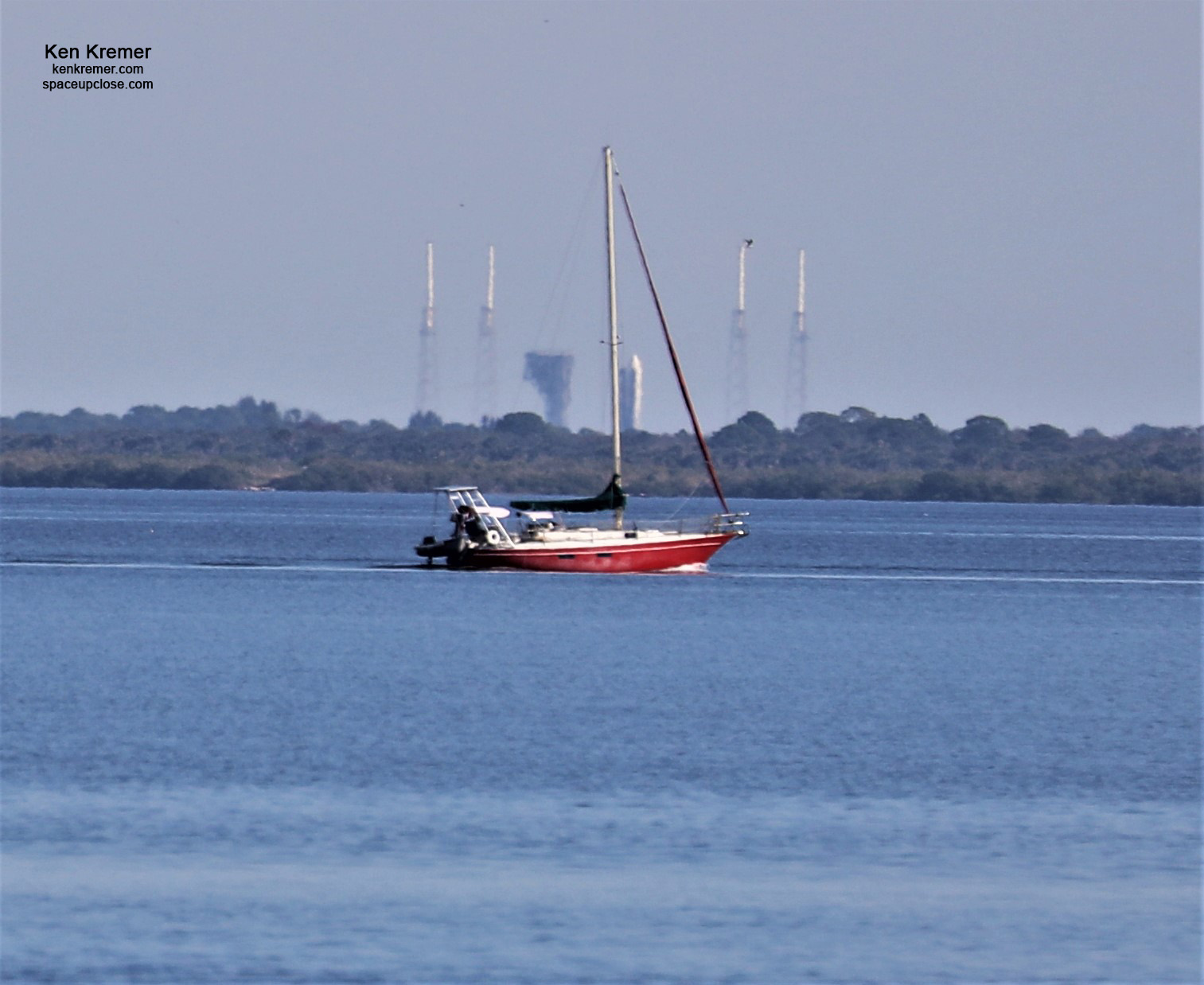
Overall this marks the 90th Atlas V launch
To date ULA has launched 146 times with 100 percent mission success.
Watch Ken’s commentary at WFTV ABC 9 Orlando about the ULA Atlas V launch Dec 5 of STP-3 space technology demonstration satellite with US Space Force & NASA payloads in particular for nuclear blast detonation detection:
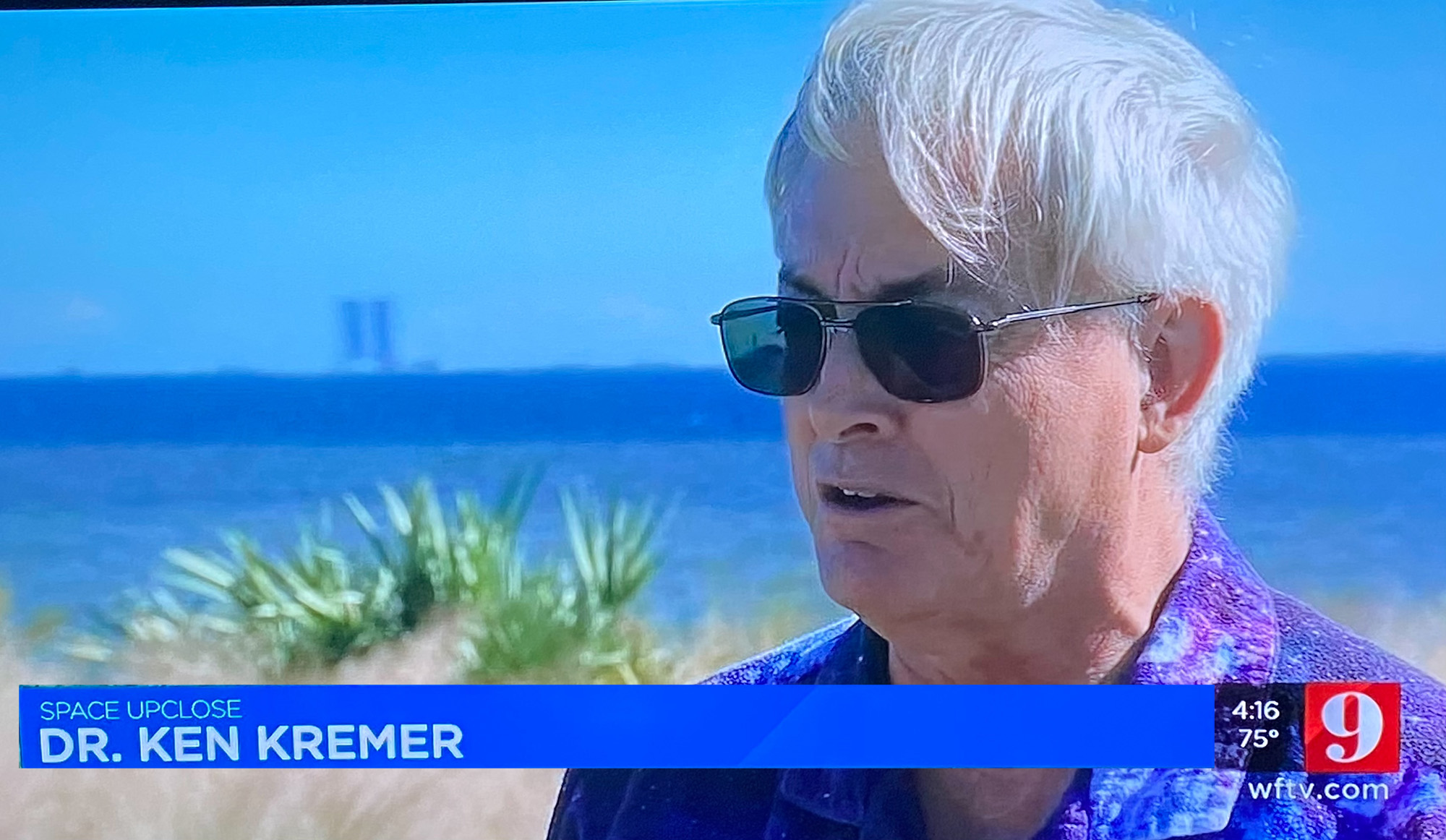
Watch Ken’s continuing reports about National Security missions, SpaceX Starlink , SpaceX Crew and Cargo Dragons, Artemis, SLS, Orion and NASA missions, DART, Lucy Asteroid mission, Blue Origin and Space Tourism, Commercial Crew and Starliner and Crew Dragon and onsite for live reporting of upcoming and recent SpaceX and ULA launches including Crew 1 & 2 & 3, ISS, Solar Orbiter, Mars 2020 Perseverance and Curiosity rovers, NRO spysats and national security missions and more at the Kennedy Space Center and Cape Canaveral Space Force Station.
Stay tuned here for Ken’s continuing Earth and Planetary science and human spaceflight news: www.kenkremer.com –www.spaceupclose.com – twitter @ken_kremer – email: ken at kenkremer.com
Dr. Kremer is a research scientist and journalist based in the KSC area, active in outreach and interviewed regularly on TV and radio about space topics.
………….
Ken’s photos are for sale and he is available for lectures and outreach events
Please consider supporting Ken’s work by purchasing his photos and/or donating at Patreon:
https://www.patreon.com/kenkremer
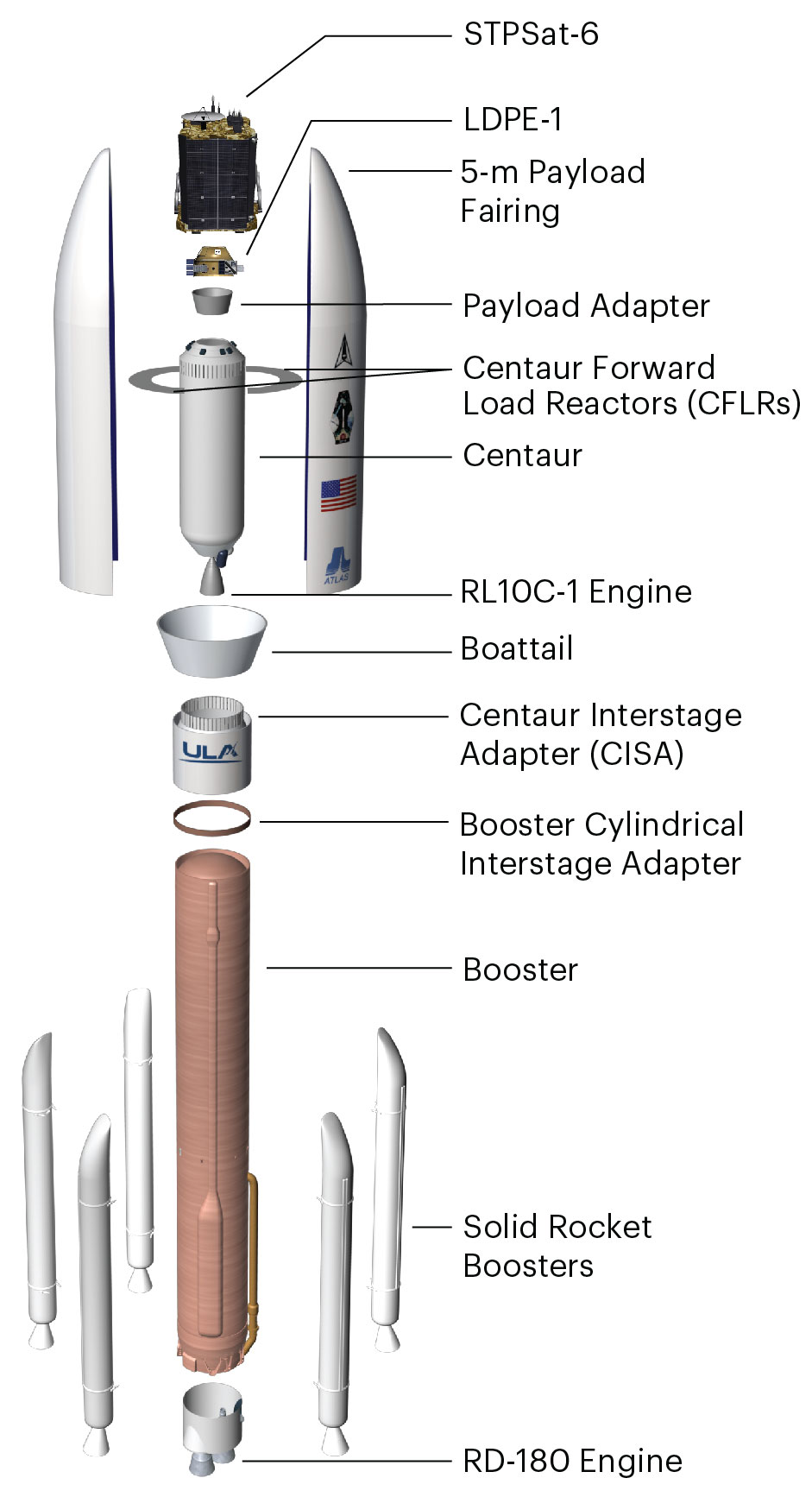
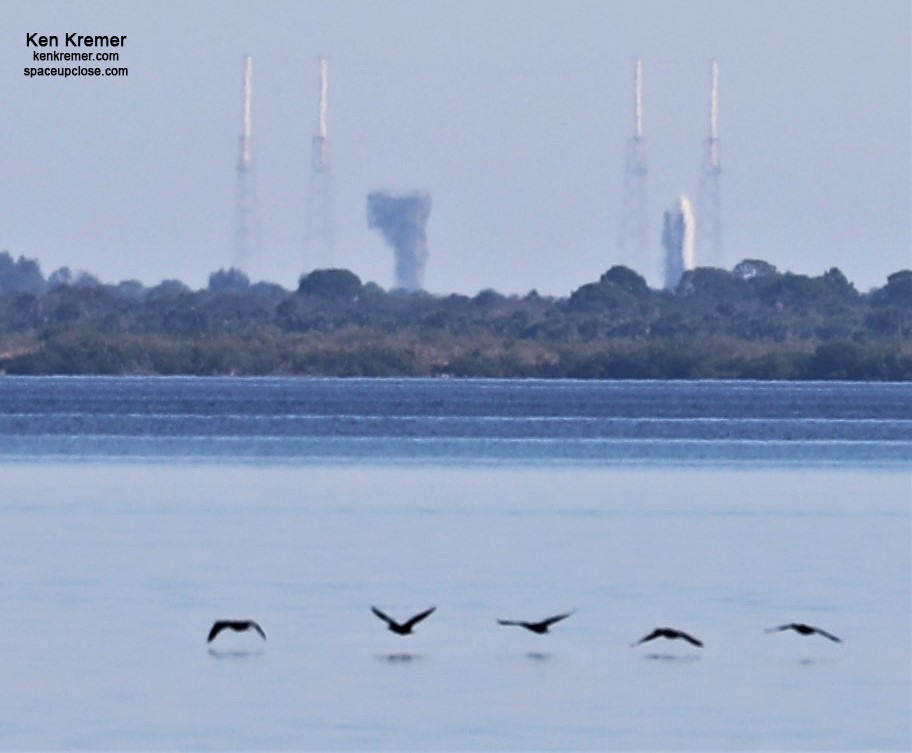
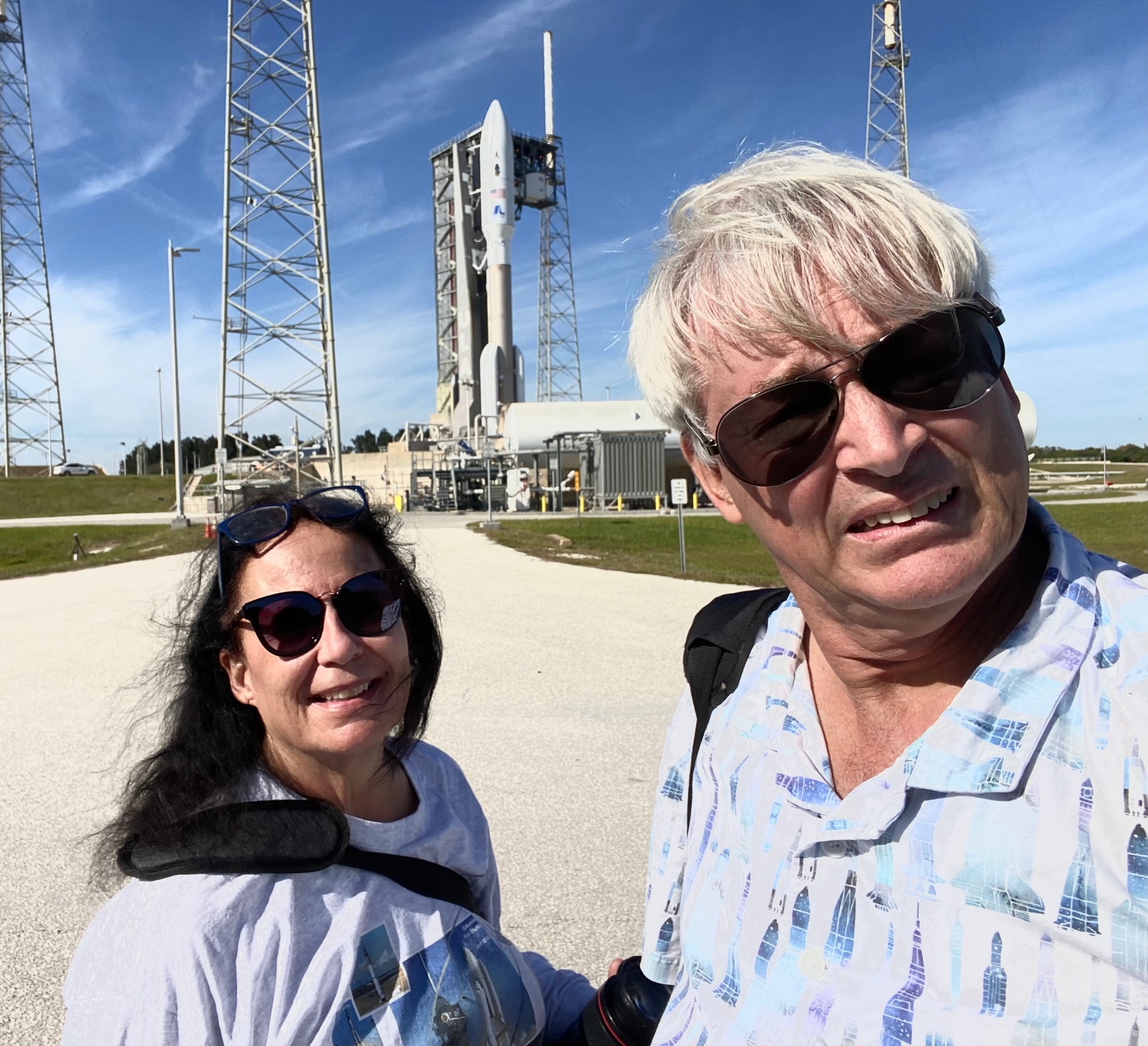
x


